8 examples of great mobile modals that will delight and engage your app users

.png)

.png)
If you frequent our blog, you know that turning your product into an engine for growth requires engaging your users where they are—in your app—with the right messaging, and at the right moment in their journey.
We’ve talked about how you can use tooltips to do this—on both web and mobile—and we’ve discussed ways to use modal windows effectively in a web or desktop application. Now, let’s look at how modals can be used to improve onboarding, increase engagement, boost conversions, and encourage social sharing on mobile apps, specifically.
A mobile modal is a full or partial overlay that appears in-app to deliver a message or prompt user action. Also called pop-ups or overlays, these messages temporarily interrupt the user experience to display important content.
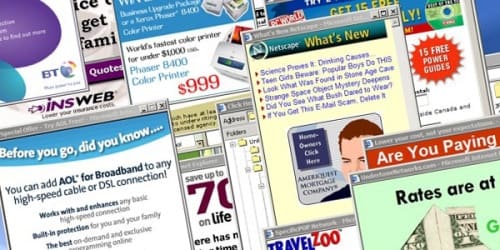
But mobile modals are far more than spam-filled pop-ups. When used correctly, they serve as helpful tools that enrich a user’s in-app experience and can even help propel them towards long-term engagement and retention.
Because definitions can get tricky in a rapidly evolving industry, let’s define what we consider the 3 types of mobile modals:
These are the default messages that pop up and ask users for things like push notification permissions, location services opt-ins, or App Store reviews. Arguably the most common type of mobile modals, they’re also the least beloved.
But pop-ups generally serve an important purpose. For instance, user reviews are critical to an app’s success in the marketplace. And, even more urgently, an app’s functionality often falters unless users grant permissions.
The good news is that this UI element doesn’t need to stand alone. Instead of relying on the standard grey pop-up in isolation, you can use either a branded overly (partial screen) or fullscreen modal to prime users for the permissions request. For example, Babbel primes users to grant device permissions with a branded request first. Only if users say that yes, they would like to grant microphone access, are they shown the standard iOS pop-up—at which point they've already been plenty of context for the ask.
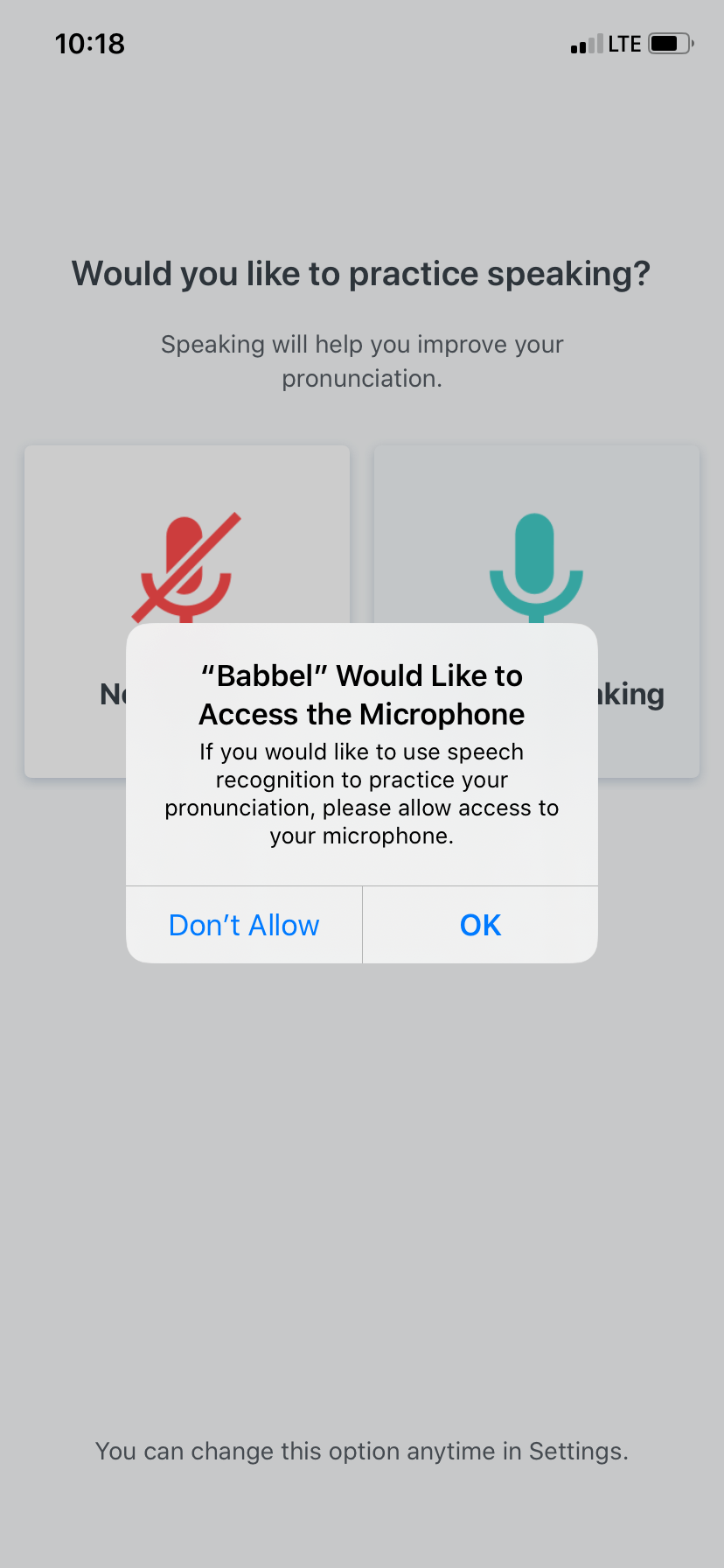
Overlays are commonly used for in-app tutorials, such as walking users through new or updated features. They can also be used to make exciting announcements within the app.
Since overlays only take up part of the screen, they can feel somewhat less disruptive than a fullscreen modal (although, functionally, they’re the same).
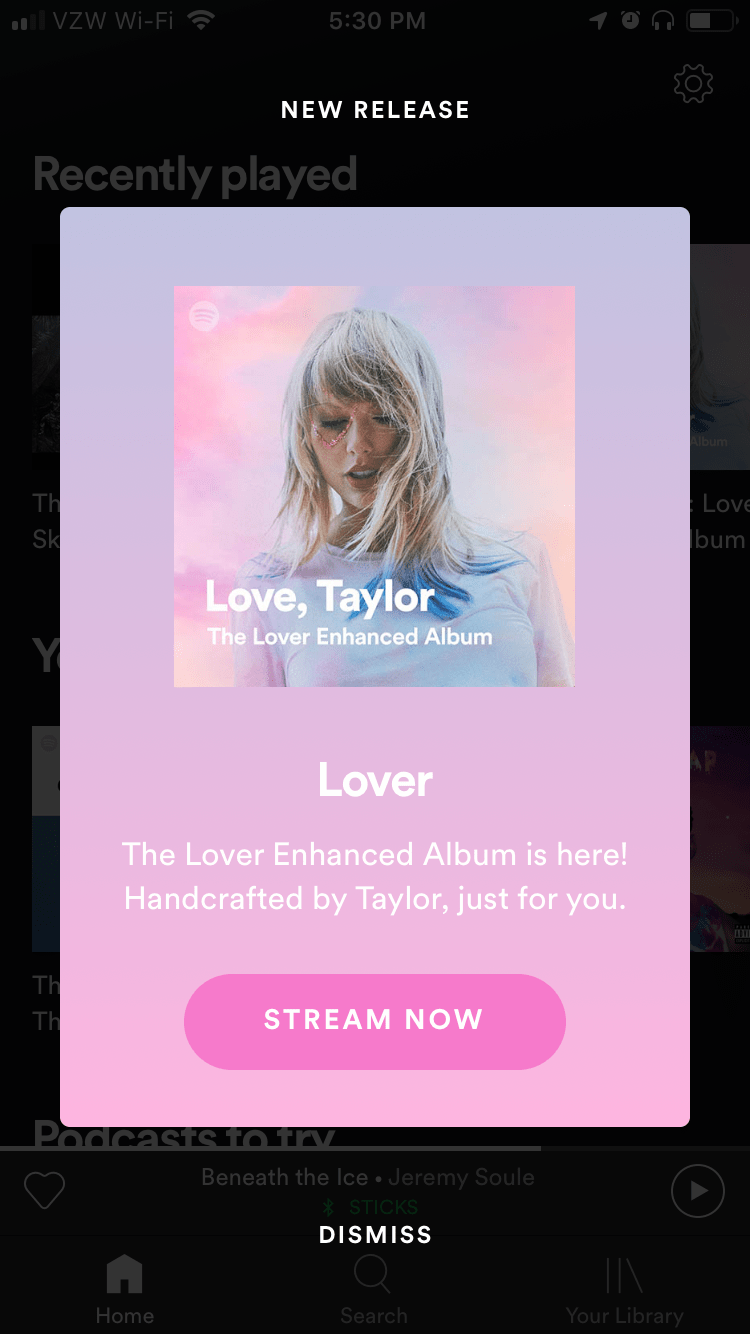
Fullscreen modals are for messages you consider so important that they deserve a user’s undivided attention—like exceptional app feature updates or confirmation of critical actions.
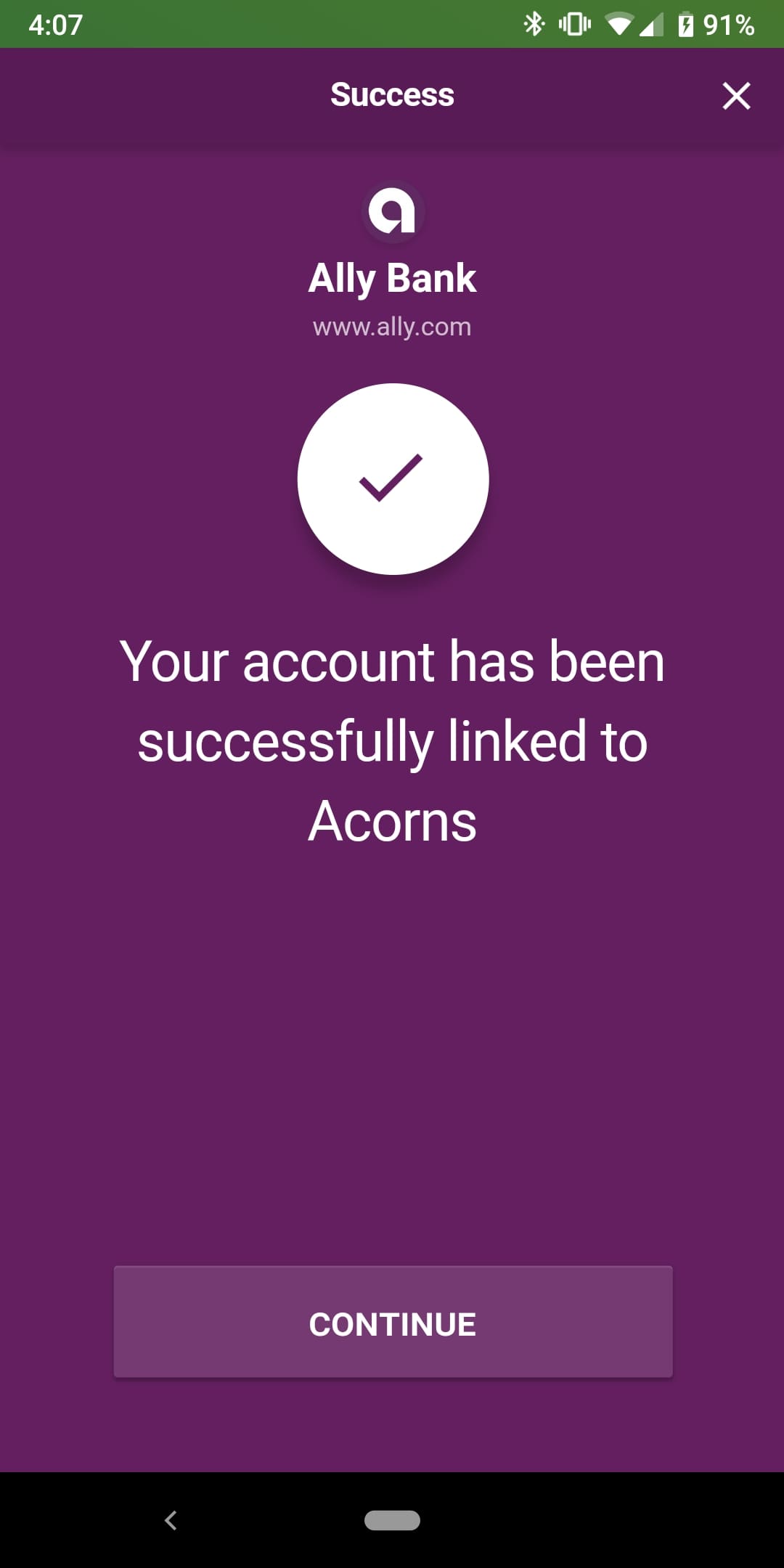
Modals are not exclusive to mobile applications. But the way modals behave on mobile versus desktop—and the impact they have on the user experience—can be quite different, depending on the device.
In some ways, modals are perfect for the limited real estate that mobile devices offer: Mobile modals will fully grab the user’s attention since they’re the only thing that fits on the screen. The challenge facing marketers and app owners is that the timing and execution of modals is even more critical on mobile than on desktop.
Here are a few tips mobile app owners can use to make the best of their condensed creative space:
We’ve all seen the standard iOS and Android permission requests. For iOS, it looks like this:
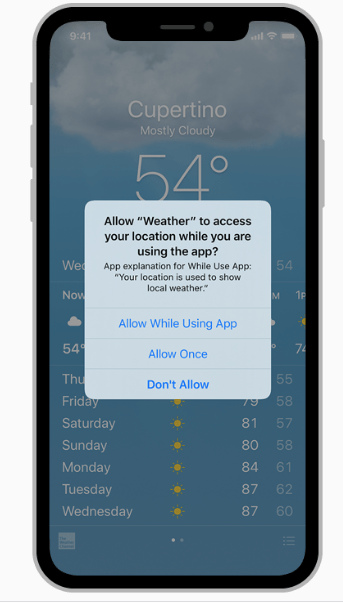
Apple can get away with this because they’re well, Apple. But for everyone else, using a series of standard pop-ups looks like you’re phoning it in.

Adding your own style and personality to your in-app messages is an important part of an effective app marketing strategy. Users are far more likely to pay attention to modals that feel like a natural, intentional part of the app experience.
The messaging of your mobile modal is just as important as its design. You should treat the copy with the same weight you would any piece of marketing, because that’s precisely what it is.
The message is half the battle. The other half? Timing. You want to reach users at a moment when they’re primed to take action We’ll do a deep dive into this in a bit, but the TL;DR is that in-app messaging should be timed and tailored to where users are in the user journey.
Using images in your mobile modals allows you to get your point across in a succinct and creative manner. And branded graphics can really help a modal feel like an intentional part of the app UX.
Now that we know what goes into creating a great mobile modal, let's take a look at some examples of real apps that use this UI pattern effectively:
Gmail effectively used an overlay in-app message to relay some very important news to users—their UI got a fresh makeover with 3 different layout options to choose from. In this example, Gmail hits all the right notes with consistent branding and succinct copy that creates a compact onboarding experience that excites and informs users.
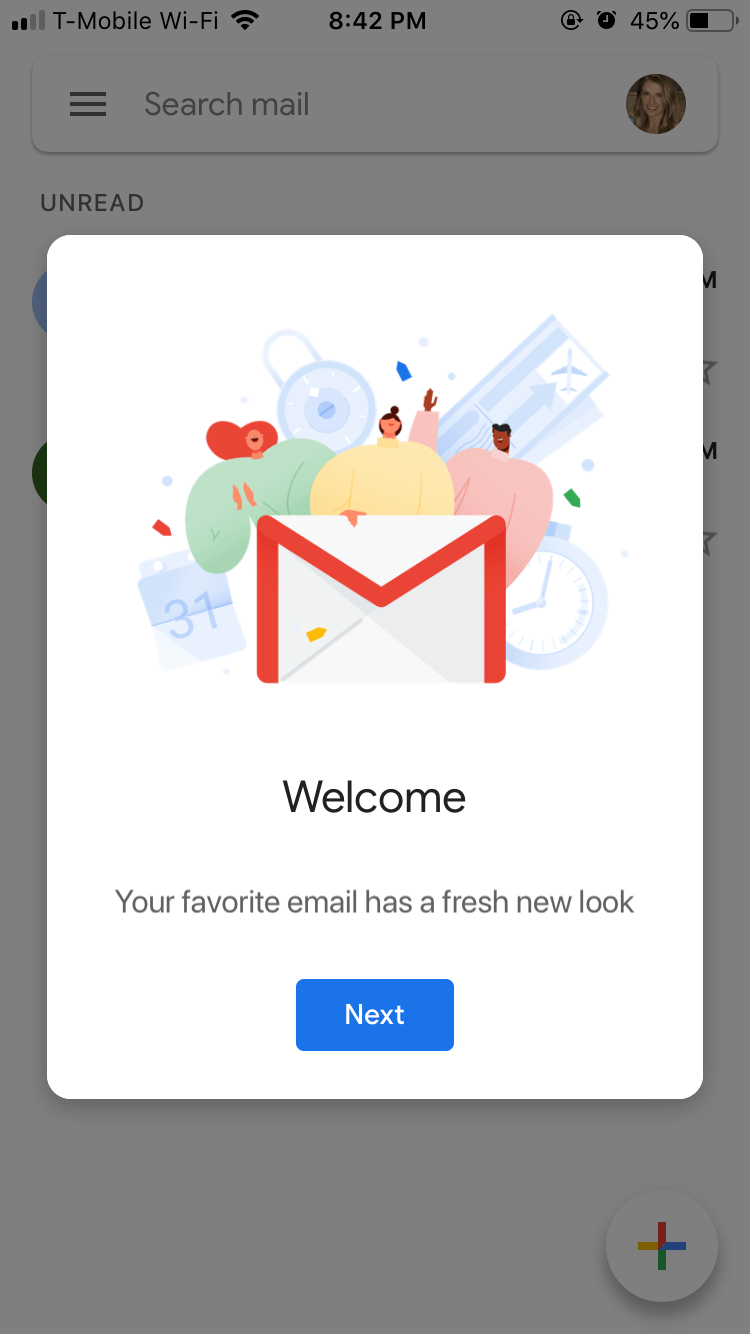
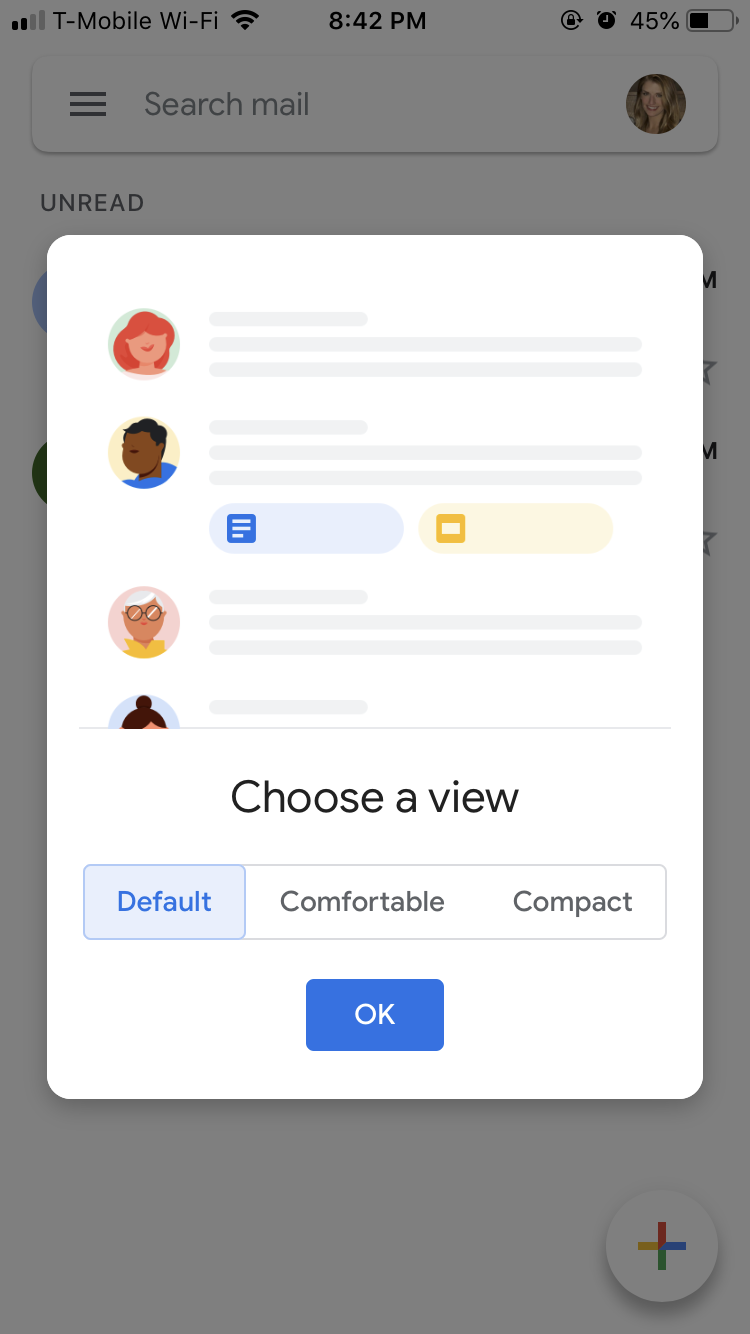
Remember, while your team might be excited about app updates that enhance the user experience any change can be jarring to end-users. By using in-app messaging effectively, you can mitigate the risk of churn associated with redesigns or major changes to your UI.
Youtube’s permission request is among the best we’ve seen. Rather than ask for permission without context, the app positions notifications as a must-have feature. The messaging effectively conveys the benefits of opting in to push notifications (and taps into users’ fears of missing out).
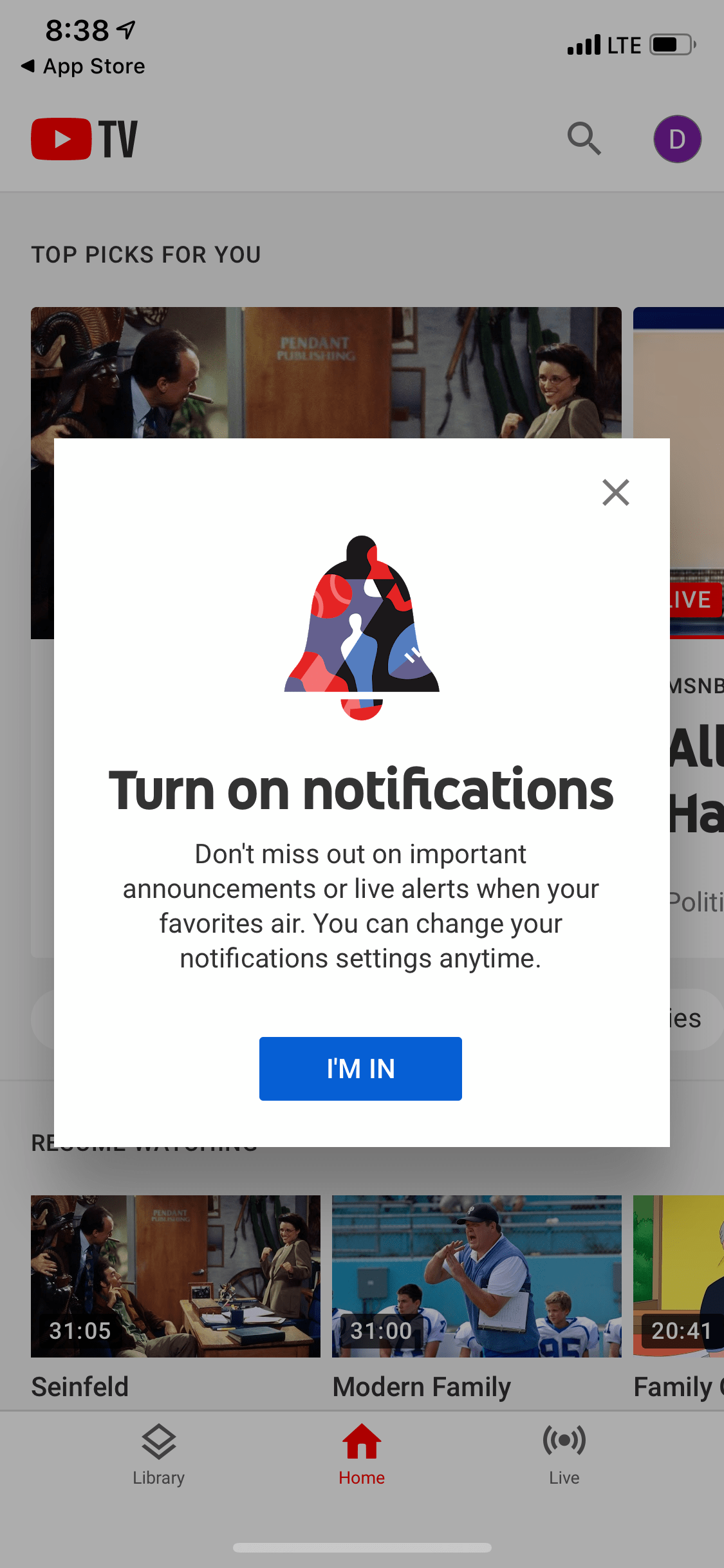
The beauty of Spotify’s mobile modal lies in its simplicity. The messaging is clear—you can stream your favorite artists from Spotify on Google Home. Though it seems effortless to the end-user, it’s clear a lot of thought went into the timing of this message, which only appears when a user is listening to music near a Google Home device,ensuring the message is relevant and helpful to the user in the moment.

Spotify knows that being able to stream their app on multiple devices equates to better retention and revenue. Their straightforward modal does a great job at keeping this engaging app feature top of mind.
Sephora used a fantastically simple modal to inform users about changes to the app’s menu bar. We like that this brief FYI doesn’t leave much for interpretation and emphasizes the that there’s been a conscious improvement made to the user’s navigational experience.
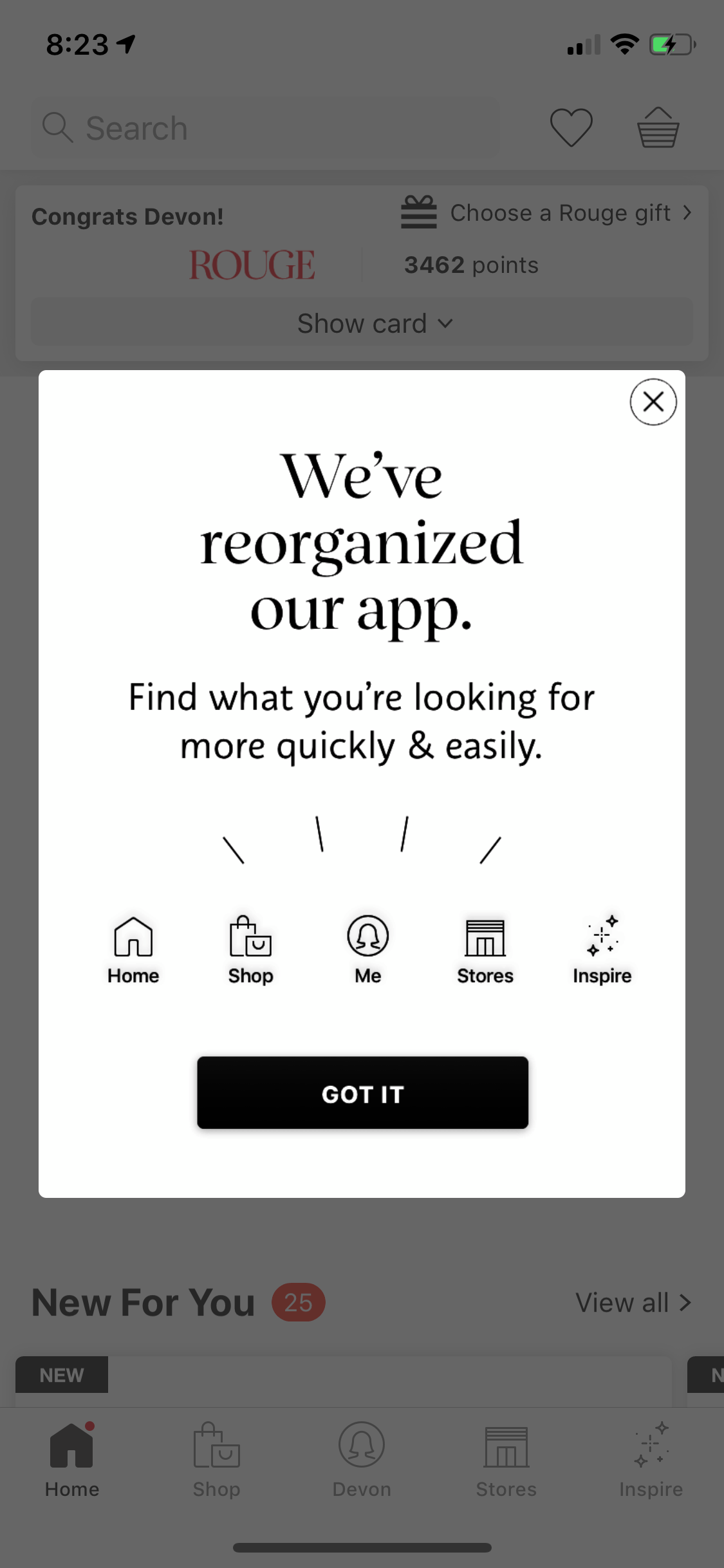
Upselling is an important yet challenging part of an effective app marketing strategy. Venmo uses a compelling mobile modal to let users know about (and sign up for) the company's unique card.
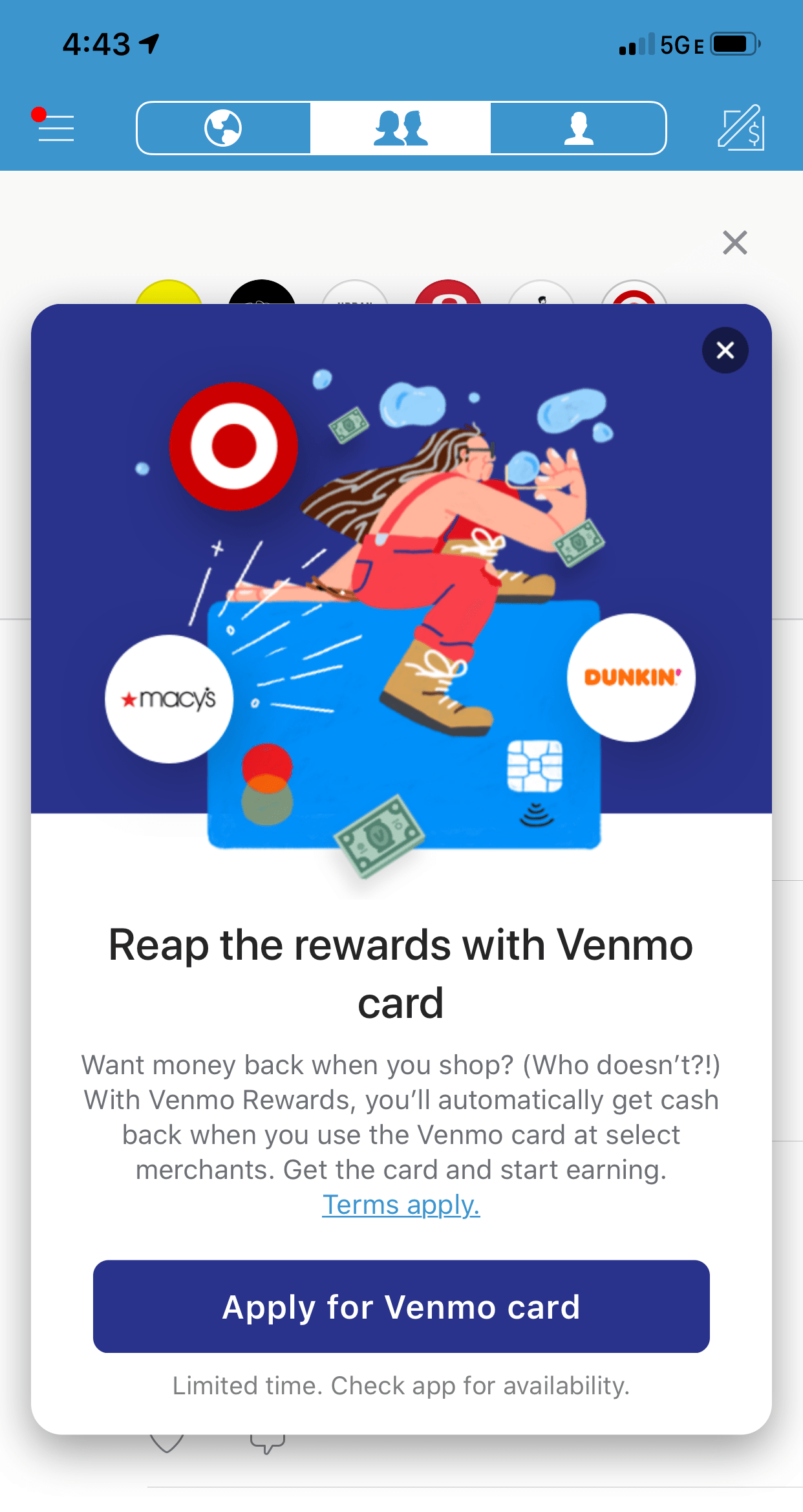
Eye-catching imagery, compelling copy, and a prominent CTA make this a very appealing offer for frequent Venmo users.
Caviar utilizes users’ location info and app settings to better satisfy their cravings with a personalized in-app message. Caviar uses an overlay modal to promote newly added restaurants by letting users know that delivery fees for a new, nearby restaurant are free for a limited time. A tempting image catches the eye and gives hungry users a reason to click through.
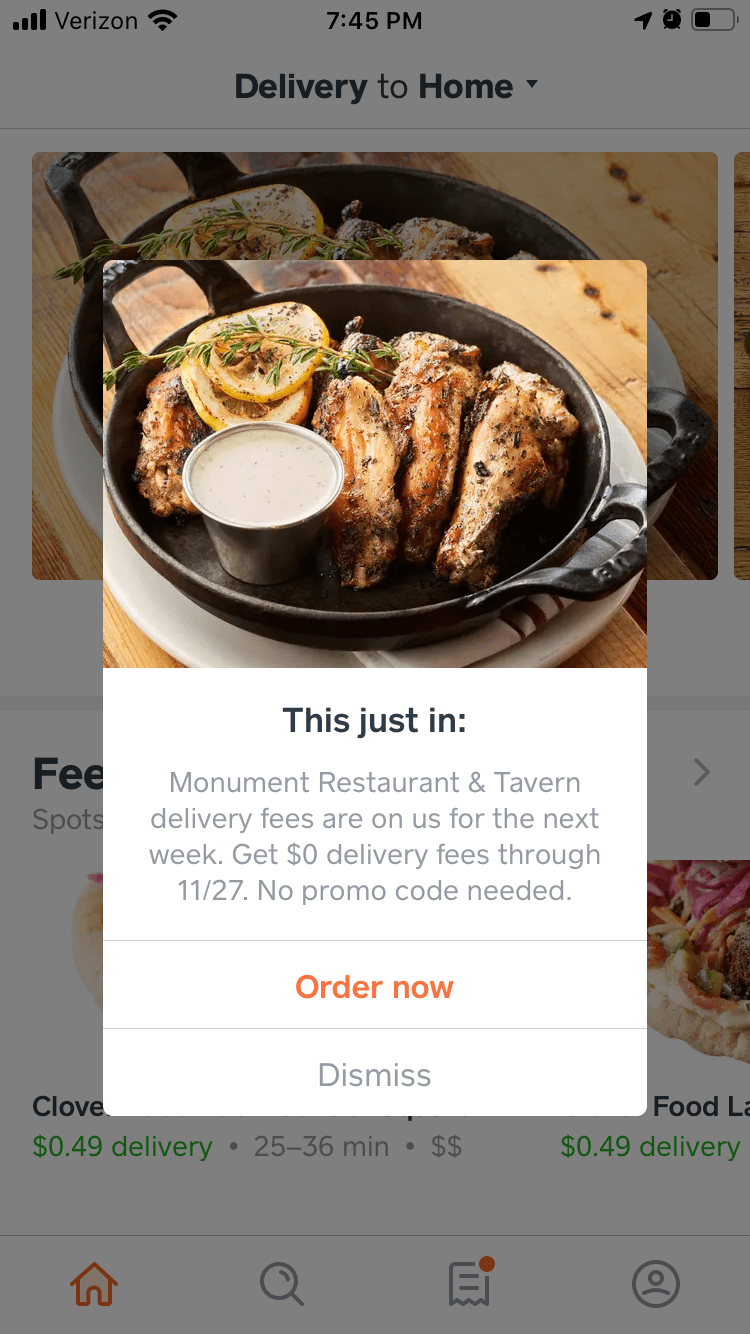
The in-app promotion works well for 2 different audiences:
In-app messages like this can do wonders for revenue and retention rates.
Nike’s running app does a great job of recognizing and rewarding users for hitting in-app milestones. These feel-good messages, combined with other elements of gamification like “running streaks,” encourage more frequent in-app sessions.

Another bonus of an achievement modal like this? Social sharing. Encouraging users to share their success on social platforms is an easy and organic way to promote your app.
Let’s face it: Getting users to provide feedback in any format is fairly difficult (unless they’re fuming mad, of course, in which case people have a lot to say!). But for apps like OpenTable, user generated content is essential. That’s why they strive to make contributing opinions as seamless as possible.
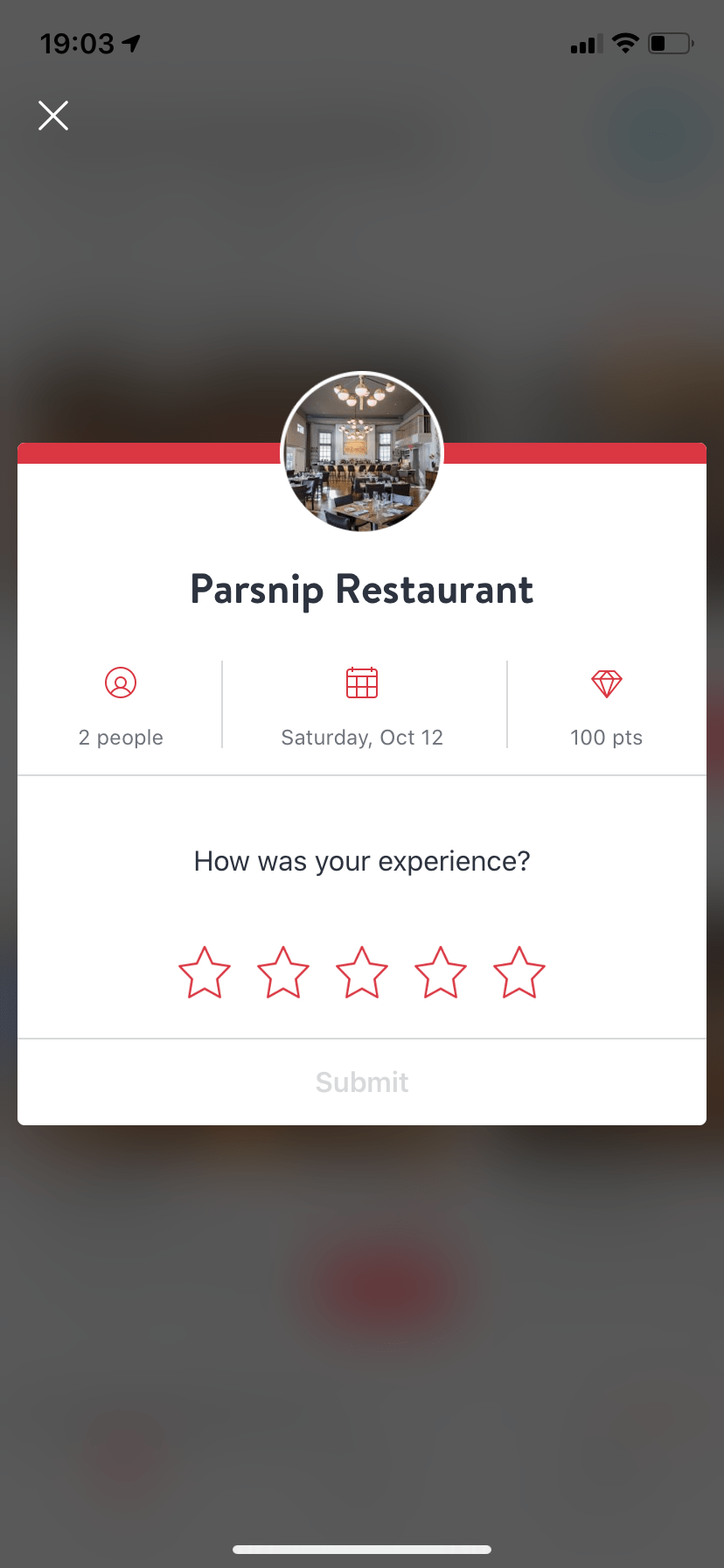
OpenTable’s use of a mobile modal as a portal to providing feedback is clever and effective. It’s clever because it doubles as a reminder about the last time the user received value from the app (their most recent restaurant reservation), and it’s effective because using a small overlay gives users the impression that this will be a quick and easy experience (which it should be).
Yes—when used correctly, mobile modals are one of the most effective tools for driving user engagement and retention.
They offer a rare opportunity: a direct, focused line of communication with users inside your app. But their impact depends entirely on how and when you use them.